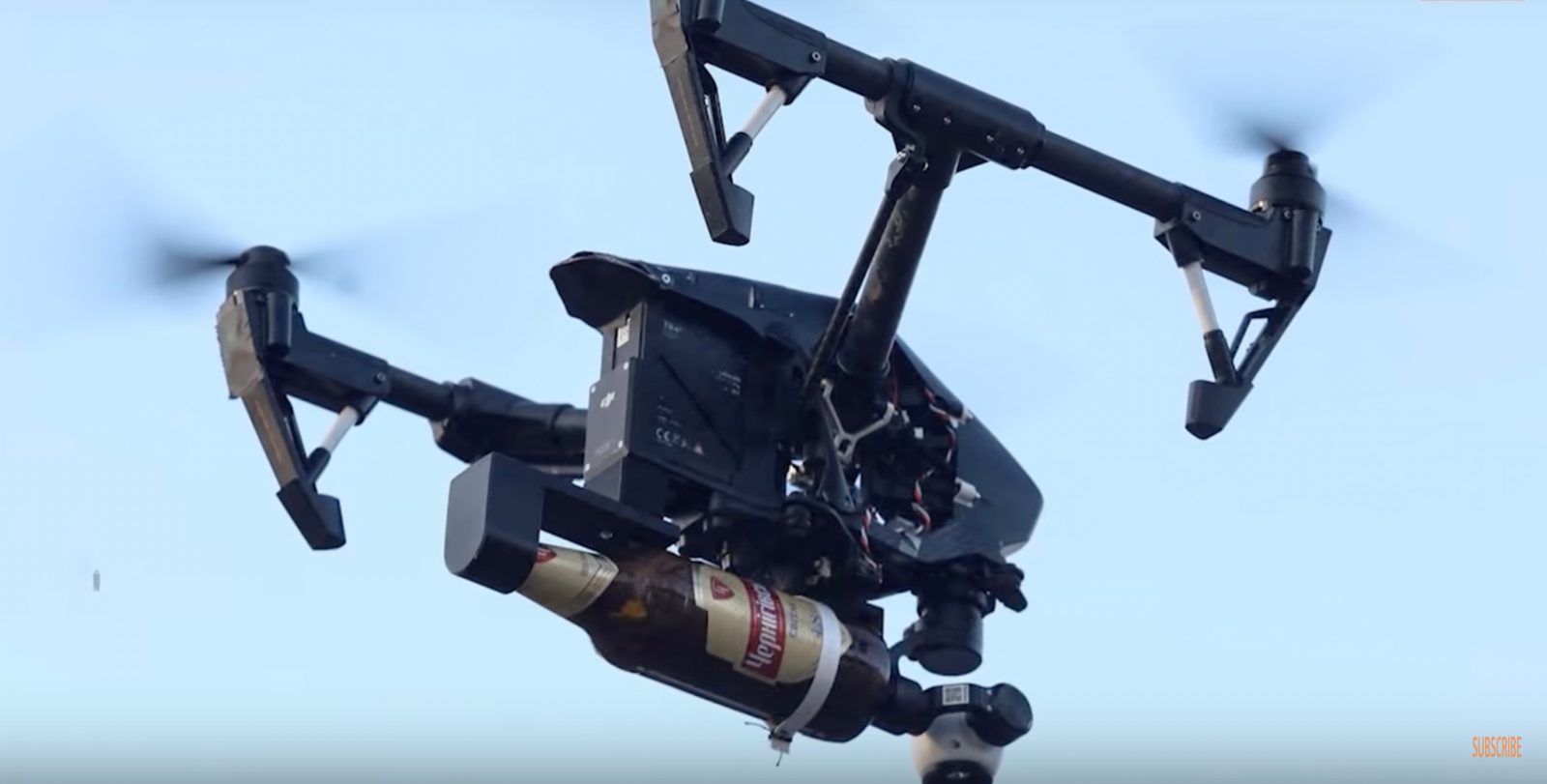
Less than two weeks after Ukraine officials called on drone-owning citizens to volunteer their craft for use defending the country from invading Russian forces, some of those non-military craft have now been reportedly weaponized to drop Molotov cocktails on targets below.
The fruit of innovation, team work, and a Soviet-era repair tradition known as “snotting things together” any way that works, the incendiary aerial delivery device was featured in photos in the New York Post, which failed to catch the clear markings on the UAV it says was developed by Ukrainian Territorial Defence Forces. In fact, the Ukraine craft in the images is a DJI Inspire cinematic drone tricked out with a fastening to hold gas-filled beer bottles for dropping, one would suspect, on Russian army targets.
The repurposing of the drone involves the collaboration of Ukrainian Territorial Defence Forces – which has been training volunteers to the resistance against how to make and use Molotov cocktails effectively in the battle against Russian invaders – and Lviv’s Pravda Brewery. Anyone seeking to slake their thirst from the small, artsy, and decidedly patriotic maker of craft beers, however, will have to wait while it serves the national cause.
“On February 24, our brewery stopped brewing beer and started making Molotov cocktails to win the war!” Pravda’s “For Molotov!” product web page informs browsing customers “You can make a donation by purchasing a cocktail.”

Each bottle of flaming Molotov is 100 Ukraine Hryvnia ($3.35), and for orders of $25.12 or more Pravda Brewery will deliver for free – now, quite possibly, by drone above Russian forces. All by way of the adapted UAVs like the one shown in the Post’s photos.
In those, the front-loaded DJI Inspire’s camera appears to be angled straight downward, possibly to offer a clear view of intended targets directly below. An L-shaped brace is affixed to the rear underside of the craft, and features a downward, rimmed aperture into which the beer bottle’s mouth is slid.
A thin plastic band is affixed around the center of the container – quite possibly the means by which it is held into place, because a subsequent picture of a dropped bottle shows if falling nearly upright, indicating a rear release. Also feasible is the camera mounting has been adapted to secure the bottle’s back end.
Whatever the case, the use of consumer or enterprise drones by Ukrainian forces for attack, rather than just surveillance against Russian forces would be another indication of escalation in the fighting – and may not be the last.
After all, modification of UAVs to drop gas bombs on enemies might logically lead to the release system being reworked to hold the grenades or small bombs that Mexican cartels, Middle East radical groups, and foes in the battles over pro-Moscow separatist regions in east Ukraine have deployed in the past year.
FTC: We use income earning auto affiliate links. More.



Comments